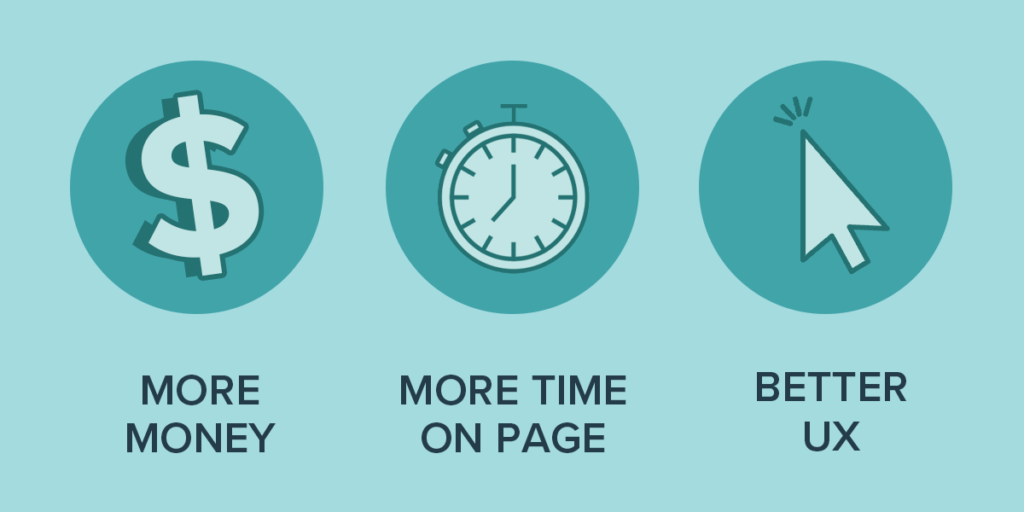- Ad Settings
Goodbye Autoplay, Hello Universal Player
•
Video ads are an important part of the monetization strategy for your website, but the options can be endless, and some options can completely destroy your user’s experience. So what’s the best way to increase revenue and RPM, while also maintaining an experience on your site that draws the reader in and allows for more engagement and time on page?
We have answers!
“I want to level up my video strategy.”
“What is the best practice for embedding videos?”
“How should I incorporate YouTube videos in my blog posts?”
“I’d like to add video to increase RPM but I am worried about user experience.”
Hi, my name is Heather Tullos 👋 and y’all probably know me because a big part of my job is moderating our Facebook groups, and these are all recent questions you’ve asked about video. I’m here today to provide answers, starting with an announcement we’ve spent the last month or so preparing you for:
Today is the day we kill sunset say goodbye to autoplay
We’ve killed off a few things here at Mediavine — pageviews in favor of sessions, AMP in favor of Core Web Vitals, and now we are taking out autoplay instream videos in favor of a better user experience.
In 2021, we rolled out the Universal Player as a solution for site owners who want to earn those high video CPMs, but might not have yet ventured into producing their own video content. What we learned almost immediately is that the Universal Player, when set up properly, very quickly outpaces our previously recommended autoplay instream settings.

Before we get too far into the details, let’s cover a few important definitions
I’ll be mentioning instream and outstream a lot in this article, so let me explain what those terms mean.
- Instream Video = Video ads that play before or during video content
- Outstream Video = Video ads served outside a traditional video player
Autoplayed video content with an ad that runs before it has always been classified as instream.
The point of an autoplayed instream ad has never been user experience — it was always just money, as recently discussed by our CEO, Eric Hochberger in AdWeek..
New IAB Standards
The Interactive Advertising Bureau (IAB, the organization that develops industry standards) has set forth guidelines that now require that these autoplayed muted ads are classified as outstream. This shift in standards is based on establishing a better user experience.
So let’s talk about what that means for you. Because while we all obviously want a better experience for our readers, we also need a paycheck.
More Money. More Time on Page. Better UX.

Effective today, we are killing autoplay. This means that if you were running autoplayed instream video on your site, those videos will no longer play automatically for the reader. They will be click-to-play.
The Universal Player — that small outstream player that we rolled out in 2021 — is going to do the heavy lifting where your video revenue is concerned. Here’s how that works:
When we look at the numbers, most autoplayed instream videos average fewer than 1 impression per session. In fact, on most sites that number drops to 0.5 impressions per pageview. That means that readers are closing out the autoplayed instream player before they ever even see the video content you created.
In contrast though, the Universal Player averages 2-4 impressions per pageview. It’s 10 px smaller and tucked out of the way in that recommended Bottom Left position on mobile, so it just chugs along, refreshing every 30 seconds as long as there’s outstream inventory.
It works if a reader carefully scrolls your content and reads every word, but it also works if they scroll really quickly or use a jump link to hop down the page. Since it DOES work so well, there are not actually that many Mediavine sites that are still relying on an autoplay strategy.
For those of you that will just be making the shift today, I wanted to be sure to provide answers to common questions, and to help you be sure you are set up for video success.
WHAT ABOUT ALL OF MY VIDEOS?!!!

If you’ve spent time and money creating useful video companions to your blog posts, you are still in great shape. Video is an excellent way for readers to learn more and have an additional visual companion to the content on your site. It speaks to the different ways people like to learn, and when they choose to click on a video they are engaged.
Engaged readers pay you more in the form of higher CPMs and longer time on a site. Not only is that reader seeing the ad in its entirety, but they are also sticking around for your content instead of looking for ways to exit.
Video is also still great for SEO. Google loves it, and videos can give you additional opportunities for how you appear in search results.
And let’s not forget all the ways you can creatively reappropriate video content across social media.
How to set up Mediavine video for the highest revenue, RPM and ROI
Since we are removing Autoplay Settings for you today, including Featured Video, there are fewer buttons for you to worry about, and this set up is really simple.
Check on Your Optimize Placement Settings
Without videos being autoplayed, these settings are no longer needed. However, before you disable them permanently, be sure that your videos are embedded in the correct place in your posts. Find out more details about correctly embed, because if a video is NOT autoplaying, we want to be sure that it IS where your reader can find it and click to play.
Optimize placement settings can be important if you have not been consistent with video embeds across your site (maybe they are in the first screenview, maybe they are not in the easiest place to see in most posts, etc).
To check your video placements, disable Optimize Placement on desktop and mobile, and save. Then go to the Top Videos section of your dashboard and click View on a few of the top videos. Scroll through the post or use your jump links. If the videos are where they should be, you can leave Optimize Placement off.
Embed Your Videos
This one is important! If you have video content it should be embedded into the corresponding blog post.
➡️ If your post has a how-to or recipe card, be sure to embed IN THE CARD.
➡️ If your post does not have a card, embed in the blog post.
❗️ It is not necessary (and is not best practice) to embed in both the card and the post. If you have a card and embed there, that is all you need to do as far as video schema goes.
Be sure to fill out your video details.
This is still important for advertiser spend as well as SEO. Advertisers don’t watch your videos so they use the associated URL and keywords etc to understand more about how to spend.
If you have YouTube Videos…
You can embed your YouTube videos (the recommendations for embeds are the same! In the card if you have one, in the post if you don’t) if that’s your preference, but there are a few things you will want to keep in mind.
- If a reader clicks-to-play your YouTube video, you won’t be able to monetize that view on your blog (you CAN with the Mediavine embed).
- YouTube embeds can be slow. They often turn up in pagespeed reports so it’s important to keep an eye out.
- If you want to grow your YouTube presence via your website, you can also connect your YouTube channel via Mediavine video.
Video has changed so many times over the years, and it will likely change again (but hopefully not for awhile). This current strategy based on IAB standards and best practices is really striking an excellent balance and we think it opens up so many more creative opportunities for how to approach video content on your site. Have questions? You know where to find us!
You can bookmark this help article and are always welcome to reach out!
About the author
Share this page